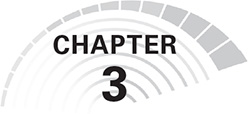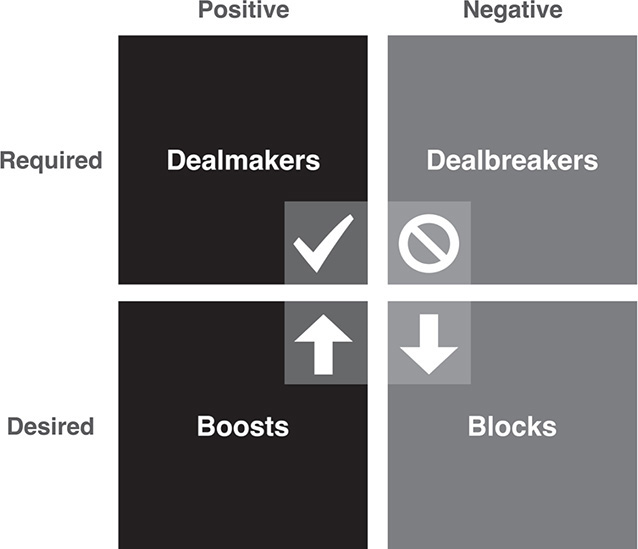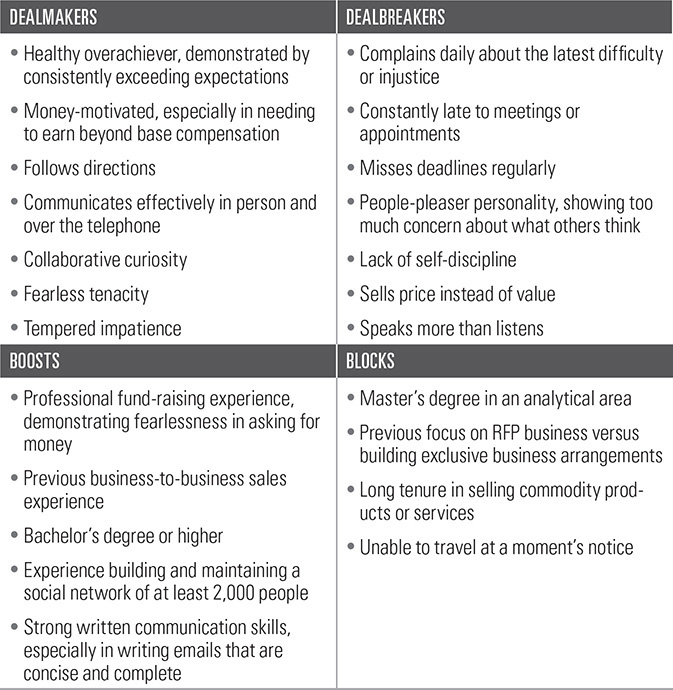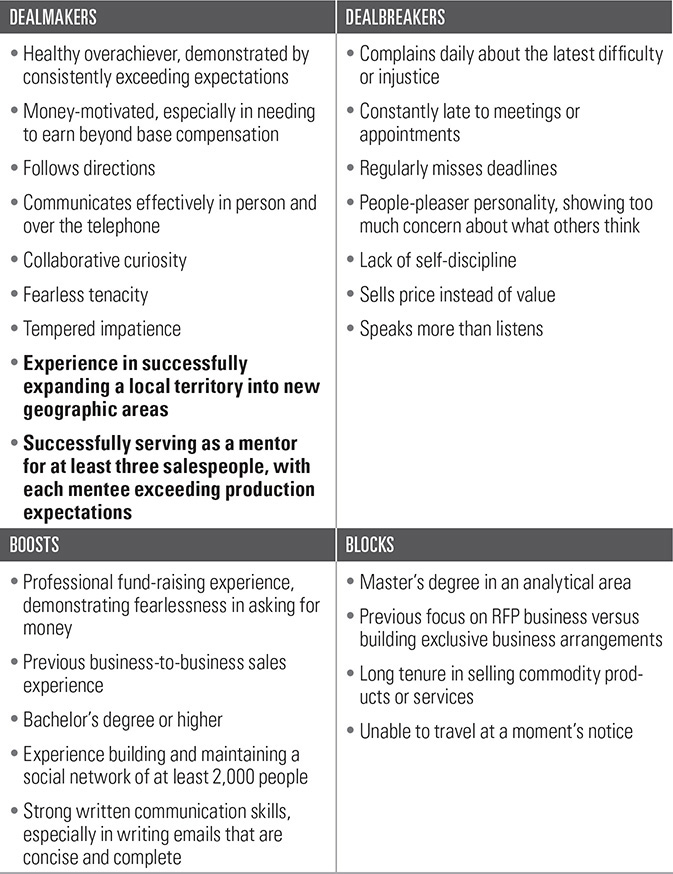
Design Blueprints Detailing Who’s Right for a Job
Dating and interviewing have a lot in common. Both are about getting to know one another better and can lead to a long-term relationship. This courtship can become something very special—a fulfilling and nurturing partnership that meets the needs of all involved.
For decades, I’ve believed that healthy dating was a great metaphor for filling jobs. What I didn’t expect was that the metaphor would be put to the test in my personal life after my first marriage ended in 2007. This marriage taught me a lot about the importance of compatibility. I knew I wanted to put this knowledge to use when I was ready to date again. Being completely honest with myself, I acknowledged I had never experienced healthy dating. Because of this, I was convinced that I lacked the experience to pick the right women to date.
I was wrong or at least forgetful. I had proven methods for fast and accurate hiring, so I simply needed to adapt those methods to dating. Selecting appropriate people to interview or date is where it all begins. Applying my Hire-Right Profile, a process for creating a blueprint for who is the best fit for a job, made sense as the place to start.
I sat down with my laptop and filled in a “Dating-Right Profile,” my new name for this romantic version of my hiring system. Like a Hire-Right Profile, it had four quadrants. Each quadrant detailed important criteria for potential dating partners: Dealmakers (my must haves), Dealbreakers (my must not haves), Boosts (additional positive attributes that would be nice to have), and Blocks (negative attributes that I preferred not be present).
I started by listing my Dealmakers. I thought through and noted the attributes of people with whom I was compatible in personal and professional situations. These attributes included a good sense of humor, consistent follow-through, healthy work–life balance, and the ability to be emotionally present.
Thinking about challenging relationships, unhealthy friendships, and toxic interactions at work helped me create my Dealbreakers. I pondered those associations, identifying the underlying traits that made them difficult. My list of Dealbreakers included a drama-filled life, a victim mentality, and manipulative behavior.
I paused for a moment, reviewing what I’d come up with so far. I had noted a dozen Dealmakers and about the same number of Dealbreakers. I was forming a clear picture of who was and who was not a fit. That allowed for some daydreaming about my Boosts and Blocks. I pictured travel and cooking meals with a significant other, adding these to my list of Boosts. Someone who lived out of town or traveled a lot for work made my list of Blocks.
In 20 minutes, I was done. I knew exactly who I was looking for. As I began to date, I found it surprisingly easy to identify women who matched my needs and wants. Each person I met was compared to my Dating-Right Profile. As Dealmakers showed up, I’d check those off and continue. If a Dealbreaker appeared, I’d kindly end our interactions.
My greatest concern in using my hiring profile for romantic purposes was that it would turn dating into a cold, dispassionate exercise. That was not the case. My Dating-Right Profile took away much of the pressure of picking potential matches and getting dating right. I knew that I could show up and just be me, having enjoyable encounters with women who may or may not be a fit for a relationship. My dating profile helped me make logical choices about something that can often feel illogical and emotionally overwhelming.
Dating was enjoyable, at times stress free. Did it go flawlessly? No. A few dates were awkward, especially with several women who had misrepresented themselves. The upside was that those awkward dates helped me fine-tune my Dating-Right Profile. The more I used it, the better I got at choosing women to ask out. I had many lovely first dates, with a few moving beyond that point. However, each of those ended after a Dealbreaker appeared, or it become clear that a Dealmaker was missing. Until I met Holly.
My first date with Holly was supposed to last an hour. Instead, we talked for three, after which I ended up checking off a number of Dealmakers. A second date led to a third and then a fourth and then I stopped counting. It was crystal clear that a relationship with Holly had real potential. Over the following months, I realized I had found someone with every one of my Dealmakers and none of those show-stopping Dealbreakers. Holly also had a number of those bonus traits listed in my Boosts and none of the Blocks. I was falling head over heels in love.
It was easy to fall in love with Holly. Not only because of the caliber of person she was, but because I knew that I was honoring my needs. It was safe to be present and build a relationship. We were married in New York City’s Central Park after a three-year courtship. It even rained for a few minutes during the ceremony, which, supposedly, brings good luck. However, I know that luck had nothing to do with the wonderful marriage I have today. It exists because I planned for it, selected a good match, and fell in love. My romantic version of the Hire-Right Profile allowed me to make logical choices rather than allowing my decision making to be ruled by emotion.
Emotions, even those that are unpleasant, are an important part of being human. The problem with emotions experienced during hiring is their inherent ability to compromise sound decision making. We select the wrong people for the wrong reasons when our feelings get in the way.
In a conversation about the impact of emotions on hiring, human resources veteran Pam O’Connor acknowledged how problematic emotionality can be when trying to select someone for a job. “I’ve worked with lots of smart leaders in the profit and not-for-profit sectors,” she said. “Unfortunately, I witnessed many of them make emotional hiring decisions that turned out poorly. From my experience, I believe that emotions are a top factor for why good candidates become bad hires.”
During her tenure as an HR executive in top organizations including retailer Wet Seal, healthcare firm Baxter, and global charity Catholic Relief Services, O’Connor participated in thousands of interviews. She saw a direct correlation between emotionality and effective selection. “When hiring managers are emotionally triggered during the interview process,” said O’Connor, “the more likely their hires will leave or be terminated prematurely.”
O’Connor’s experience of the impacts of emotions on hiring parallels my own. In reviewing 410 failed hires (defined as employment lasting less than six months), 92 percent of the managers who had hired those individuals experienced emotions that they believe had a negative impact during their interviews (Figure 3.1). For example, feeling overwhelmed at having to manage the additional workload of an open job while also conducting interviews was a common emotion. Fearfulness over losing a potentially good candidate to a competitor was reported by more than half the managers. The most frequently mentioned emotion was being comfortable with the individual being interviewed. In exploring this particular feeling, managers agreed that feeling comfortable with a candidate made it easier to overlook required or desired traits that were missing.
FIGURE 3.1 Top Emotions Experienced by Interviewers

In an analysis of 35 years of research on emotions and decision making, Harvard experimental social psychologist Dr. Jennifer Lerner found that emotions can have an unconscious and undesirable impact on decisions.1 Emotions that are unrelated to a decision can skew thinking, causing people to make poor choices.2
A feeling of being comfortable with a candidate, for example, is a distraction. It interferes when managers are determining if a candidate has all of the necessary traits to perform well in a job. Being comfortable with a potential hire may be desirable, but it can unintentionally undermine making a hiring decision based upon factual evidence. The same is true of fearfulness and being overwhelmed. Feeling fearful about losing a good candidate to a competitor does not mean she is the correct fit for the job. Feeling overwhelmed about additional responsibilities, such as interviews and an increased workload, can easily distract a hiring manager from making a sound choice.
The emotion inherent in hiring is why active use of hiring profiles is important. Just as my dating version of the Hire-Right Profile allowed me to make smart decisions in emotionally charged situations, the same kind of objectivity is gained from having a job candidate blueprint.
Unfortunately, many of the companies who have engaged me to consult with them since 1999 had hiring profiles that were inaccurate or simply not followed during the selection process. Instead of countering distracting emotions experienced during and after interviews, leaders in these companies ended up relying on “gut” feelings.
Feelings are not facts. Emotions, left unchecked, can become false evidence that candidates fit roles they do not. Hire-Right Profiles allow you to swiftly make objective decisions based on factual evidence.
You can create a Hire-Right Profile in under 20 minutes. The setup is simple and the format familiar—a four-quadrant table (Figure 3.2).
FIGURE 3.2 The Hire-Right Profile

Dealmakers are required attributes. Candidates must have every attribute in this quadrant to be considered for hire.
Dealbreakers are knockout factors. Having any of these Dealbreakers eliminates a candidate from contention.
Boosts are desirable attributes. While not a requirement to be hired, the more Boosts someone has the more likely he will be an exceptional hire.
Blocks are undesirable traits. While having any of these does not preclude hiring a candidate, each one that is present increases the likelihood that employment will end in disappointment or failure.
A well-thought-out Hire-Right Profile contains enough detail to clearly differentiate who fits a job, and who does not. Every role has its own unique Hire-Right Profile. When a role has varying levels, each level of that role has its own version. For instance, in comparing the sample Hire-Right Profile in Table 3.1 to Table 3.2, two additional criteria were added to the blueprint for the senior-level version of the job.
TABLE 3.1 Sample Hire-Right Profile: Sales Role

TABLE 3.2 Sample Hire-Right Profile: Senior Sales Role

What you’re likely to appreciate most about Hire-Right Profiles is the detail. Each profile contains all the information you’ll need for choosing the right person. Every requirement and knockout factor, along with pluses and minuses, can be found in one spot. Instead of worrying about missing an important attribute, everyone involved in recruiting or interviewing candidates follows the blueprint.
Whether you’ve interviewed hundreds or a handful of people, those experiences will shape your Hire-Right Profiles. Also, your observations of past and current employees who have succeeded and failed in the role will provide valuable details as to what makes or breaks a good hire. The following questions will uncover those details.
What are the common assets of employees who have succeeded in the job? These assets include an employee’s skills, experiences, values, education, helpful behaviors, and personality features.
As you consider potential Dealmakers, think about all of the assets of people, including past and current employees, who have succeeded in the role. Which skills and previous work experiences do they have in common? When comparing their personal values, behaviors, and personality features, which ones were integral to their success in the role and compatibility with your culture? How did their education impact their ability to perform well in the job?
Look for patterns of assets. Assets common among successful hires are Dealmakers. Assets appearing in only a few people are Boosts.
What are the common deficits of employees who have not succeeded in the job? These deficits include unhelpful behaviors, counterproductive actions, conflicting values, and negative personality features.
Using the same process you used for Dealmakers, look for patterns among the deficits of people who failed, or who are currently failing, to meet expectations. Each deficit that shows up consistently is a Dealbreaker; deficits that appear in only a few individuals are added to the quadrant of Blocks.
In addition to Dealmakers, what other assets were exhibited by top performers?
The more Boosts a candidate has, the more likely she will consistently perform well in the role. You’ll uncover some of these answers in the first question about Dealmakers.
An in-depth review of top performers in the job will uncover additional Boosts. Think about what was truly unique about each individual who did exceptionally well. Which skills did they have that others did not? What experience did they bring to the company that was different? What differentiated the personalities and behaviors of these top performers from everyone else? Every additional detail about these noteworthy employees becomes part of the list of Boosts in the lower left quadrant.
In addition to Dealbreakers, what other deficits were exhibited by employees who were mediocre performers?
Blocks are attributes that, individually, don’t typically cause someone to fail. However, the more Blocks someone accrues, the greater the chance he will struggle. Even when a candidate has every Dealmaker and none of the Dealbreakers, Blocks can undermine assets.
Carefully review past and current employees whose job performance was disappointing. You’re looking for hires whose tenures were nothing spectacularly good or bad. What were their negative attributes? List each attribute that is not already noted as a Dealbreaker in your Blocks.
Ask your colleagues, such as your boss and employees that report to you, to independently answer these same questions. Watch for patterns among the details as you compare their input. Traits that appear three or more times in your collective answers to each question should always be included in the correct section of a completed profile.
Your HR or talent acquisition department can be a helpful resource when creating Hire-Right Profiles. Colleagues in those departments who have been closely involved with your team should be asked to answer the four questions. Also, many HR departments maintain files of performance reviews of past and current employees. These should be perused as well, looking for assets and deficits for inclusion in the Hire-Right Profile.
Existing Hire-Right Profiles can be used as templates for new jobs in the same department. Traits are often transferable for a new role, especially those that relate to values, helpful behaviors, and personality. Additional skills, experiences, and education can be identified using a variety of different resources, including:
• Friendly competitors who are open to an exchange of ideas.
• Job postings for similar roles at other companies; these can be found on company websites and on job boards.
• Websites that provide lists of job descriptions; examples include:
www.job-descriptions.org
hiring.monster.com/hr/hr-best-practices/recruiting-hiring-advice/job-descriptions/sample-job-descriptions.aspx
• Membership in an HR, staffing, or employment-related association may include access to job description templates. For instance, SHRM provides its members with dozens of sample job descriptions on their website.
• Profiles on LinkedIn, especially details that people list about their job experience and skills.
When you create and use Hire-Right Profiles for each role in your company, you gain significant advantages over people who hire by gut alone. Employee selection is done subjectively, based on accurate criteria. Your emotions, rather than running the show, are balanced with facts and logic. Instincts and gut feelings inform sound decision making versus being the primary selection method.
More important, faith in the process, versus fear of making a bad choice, allows you to make fast and accurate hiring decisions. Instead of losing talented people to more nimble competitors, Hire-Right Profiles allow you to secure top talent and fill open seats in an instant.
When we began working together, Sharon Strauss was no stranger to using hiring profiles. Strauss is vice president of client services at Vitamin T, a global talent agency that serves creative digital professionals. She came to me, wanting to improve Vitamin T’s hiring process for internal staff. “Our biggest challenge, hands down, was getting our staff away from hiring with their gut,” she said. “If they really liked someone, they wanted to hire that person, even if there were indicators that she was not the best fit.”
It took a few minutes over the phone to walk Strauss through the structure of the Hire-Right Profile. The familiarity of a four-quadrant table and the straightforward labels for each quadrant make it simple to share this with anyone, anywhere. After outlining the structure for her, Strauss took it from there. She filled in each section and, along the way, discovered several key insights. “Identifying Dealmakers was relatively easy. Once I started listing those, it was hard to stop. They flowed from my head to my hand to the paper. When I moved on to Dealbreakers, I initially found myself listing the opposites of my Dealmakers. That’s why using the four questions to guide the process was important. As I refocused on the deficits of employees who had not succeeded in the job, identifying Dealbreakers became easier.”
The simple design of these candidate blueprints has allowed Vitamin T to implement a standardized hiring tool that can be used companywide. In rolling out Hire-Right Profiles, Strauss quickly learned how the tool would make their good selection methods better. “I realized we’d been on track with most of our selection criteria,” she said. “The problem was we often gave into gut feelings. We can now call each other out when we’re compromising, and hold one another accountable to sticking to the plan and trusting the process.”
Strauss’ advice to first-time Hire-Right Profile users is to be patient. “There’s lots of factors to consider, so don’t let them overwhelm you. That’s one reason why it’s vital to include your colleagues in creating these profiles. As you use them, make sure you’re able to confirm that candidates have all of the Dealmakers and none of the Dealbreakers. Follow the plan and don’t let your personal feelings overrule the obvious. And be sure to follow the ‘rules,’ especially the one about never changing the details in the midst of the interview process.”
Once completed, Hire-Right Profiles shape the remaining steps of the Talent Accelerator Process. The following four rules will help you get the most from your completed profiles:
When a candidate seems to be a great fit but is missing one Dealmaker, it’s normal to want to adjust the profile to match the person. The same is true with Dealbreakers—but each one was listed for a reason. Sticking with what’s on a Hire-Right Profile ensures that you hire logically instead of emotionally.
Hire-Right Profiles ensure that your team misses nothing. How? Each interviewer checks off criteria they witness during their interactions, confirming that prospective new hires match every Dealmaker and have none of the Dealbreakers.
Each round of hires can provide details that improve the accuracy of future Hire-Right Profiles. Review the performance of new hires two to three months after the start of their employment. Use their successes and struggles to add details to the profile.
Specific criteria are easier to understand and identify than generalities. For instance, listing a “drama-filled life” as a Dealbreaker might confuse interviewers. It’s too ambiguous. Instead, describe specific behaviors, such as “complains daily about the latest difficulty or injustice.”
During my “interviews” with potential relationship partners, my Dating-Right Profile made it easier to know who did and didn’t fit my needs. But that was just the start; it helped me through each step of the dating process. It served as my guide on who to date, informed the questions I asked of each person, and ensured I never compromised my values nor allowed my emotions alone to run the show.
Your Hire-Right profiles will do the same for you. You’ll rely on these candidate blueprints in each step of the Talent Accelerator Process. They’ll guide you in selecting resources for procuring better talent. You’ll use them to write compelling content for employment ads and job postings. They’ll help you craft provocative questions that elicit the details needed to make accurate hiring choices. Hire-Right Profiles help you get away from hiring by gut. Facts become more important than feelings, resulting in hires who do good work.